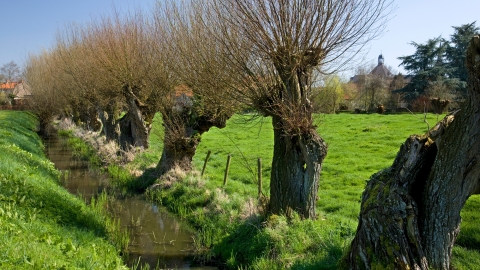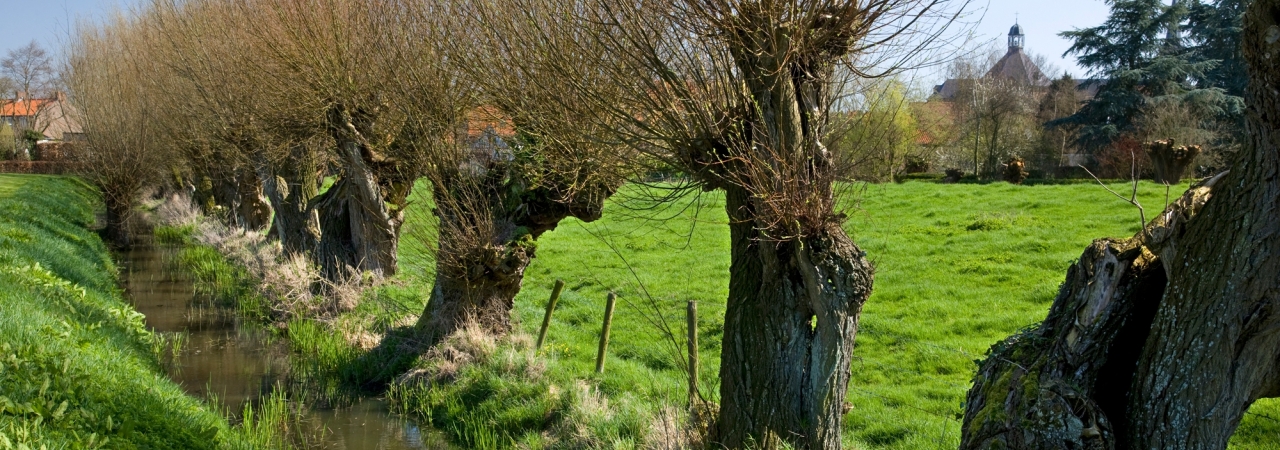In the 13th and early 14th centuries, Aardenburg was a prosperous trading and harbour town and member of the Flemish Hanze. Thereafter the town fell into a rapid and deep decline, particularly as a result of many floods caused by subsidence (due to large-scale peat extraction) and poor dyke maintenance.
Around 1300, Aardenburg was given a new, permanent defence system: a double wall measuring 4 km in circumference and slightly square in shape. There were four town gates in the walls. The town was built to grow, but as a result of the economic decline the population did not increase but declined. The town was too large and unable to defend itself properly against enemy sieges.In 1583, Alexander Farnese, the later Duke of Parma, therefore had little trouble winning back the town for the Spanish king. The Spaniards made some improvements to the stronghold and strengthened the south-eastern side, but when Prince Maurits marched towards the town in 1604, the stronghold still proved too big to defend. The Spaniards evacuated the town and Maurits was able to capture it without a fight.
The famous military engineer Simon Stevin realised that the problem lay in the size of the stronghold and drew up a plan to make a smaller stronghold within the old walls. The modifications proceeded slowly and lasted until the end of the Twelve Years’ Truce. Opposition from the population (it required the demolition of the Maria church), floods and less urgency to change as a result of the truce caused delays.
The new Aardenburg rose in the north-western corner of the old stronghold: a nearly regular hexagon with three bastions on the south side and two half bastions on the north side. The entire town was surrounded by a moat, an envelope, an outer canal and a covered road on the south side. Ravelins were built in the canals, apart from the south side.
In 1644, Spanish soldiers disguised as farmers and farmers’ wives tried to sneak inside the town walls. However, they were unmasked on time and their plan failed.
After the Eighty Years’ War, the stronghold was no longer maintained. In 1672, the town was attacked by a big French army. In the town, only an occupation force the size of one company led by a commander, ensign Elias Beekman, remained. Aided by two militia companies, his company managed to stave off the first attack. The garrison was then reinforced and a second attack – preceded by shooting – was also resisted. The French then gave up and left.
After this “Attack of Aardenburg”, as it was known in history, the stronghold was restored, but in 1688 the garrison left for Sluis definitively. From the 1690s, the stronghold was gradually dismantled. Around the town, parts of the embankments (also the Medieval) and ditches are still recognisable. In 2012, some of these were opened to the public and made more visible. A lovely footpath now runs over much of the embankment remains.



